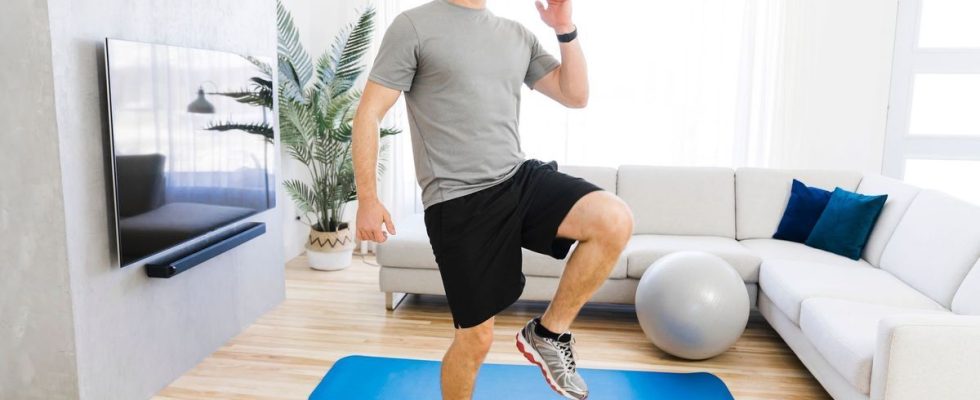Published on
Updated
Reading 3 min.
Do you have any idea of your biological age, that is, the age of your organs? A few easy tests to do alone at home can help you determine this. Discover them without delay.
Do you know the difference between biological age and chronological age? If the second corresponds to the age linked to our date of birth, the first is more subtle. This is the estimated age of our organs, which may be higher or lower than our chronological age, depending on our general health.
Calculate your number of healthy years
To assess a person’s overall health and estimate the number of years they can expect to spend in good health, doctors have developed small, simple tests that are easy to do at home.
First test: Getting up without help
This first test must be carried out barefoot. You must sit on the ground, on your buttocks and try to get up using as little help as possible. For added safety, it’s best to have someone nearby in case you fall, but theoretically it’s possible to get up without using your hands or knees.
This test comes from a study in Brazil estimating that people who need to use their hands or knees to stand up are almost seven times more likely to die within six years, compared to others.
Second test: Stand up and sit down ten times
This test requires a chair with a straight back and no armrests. You must sit on it, and cross your arms so that each hand holds the opposite shoulder. With your feet flat on the ground, your back straight, you must stand up completely and sit down ten times in a row, without help.
A way to again measure the muscular strength of an individual. According to scientists, A healthy and fit man aged over 55 should be able to complete the test in less than 18 seconds; a healthy woman of this age in 19 seconds. Men aged 35 to 55 should be able to do it in 13 seconds and women in 15 seconds.
Third test: Walking speed
For this test, you must walk a distance of six meters, at your usual pace and calculate the time taken to complete the test. Dividing this number by six will give you your walking speed in meters per second.
This test was invented during a large American study carried out and published in the Journal of the American Medical Association (JAMA) in 2011. It revealed that people who naturally walk faster than the average for their age have an expectation of longer life.
If you are 60 or older, your average speed should be around 0.8 meters per second. If you walk more than a meter per second, your life expectancy should be significantly longer than average, according to Stephanie Studenski, a professor of geriatric medicine at the University of Pittsburgh, who led the study.
Fourth test: Push-ups
For this test, you must perform a series of ten push-ups. If you can do it easily, this is a sign of good heart health. Conversely, failing to pass this test indicates a higher than average risk of heart disease. This study was conducted among male firefighters and did not include enough women to apply these results to them.
Fifth test: The grip
This test is simple: just shake a friend’s hand and ask them to test your grip strength: strong, medium or weak. Another variation: traction force. For a man, you need to be able to hold on to a pull-up bar for 60 seconds, for a woman 30 seconds. According to a study published in the British Medical Journalin 2018, men who last only 30 seconds and women only 15 seconds may be at increased risk of premature mortality.
Sixth test: Climb 60 steps
This test involves climbing 60 steps and measuring how quickly this can be done. If done in less than a minute, it indicates good heart health and a lower risk of mortality for the next ten years. If it takes you longer, the risk of mortality is increased by about 30%.
Seventh test: Balance on one leg
The best-known longevity test is undoubtedly this: stand on one leg for at least ten seconds, without assistance. This test is carried out barefoot. You must keep your arms to the side and your gaze straight. People who only last two seconds or less are more likely to die within the next ten years.
According to Japanese researchers, the better people perform in this test, the healthier their hippocampus, this brain area which combines memory and balance functions, is.
